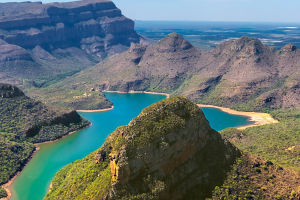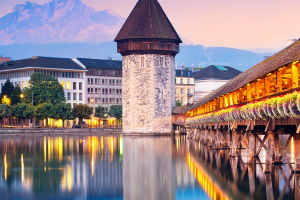Friends, are you ready to tiptoe between razor-sharp limestone pinnacles and plunge into emerald canyons carved over millennia? Madagascar’s Tsingy de Bemaraha National Park stands as an otherworldly amphitheater, sculpted by wind and water across eons.
Each needle-like spire tells a vivid story of ancient seabeds and relentless erosion under tropical skies. Inside: detailed routes, vivid vistas and essential advice for a two-day Tsingy odyssey await.
Park Overview
Perched on Madagascar’s western flank, Tsingy de Bemaraha sprawls across about 150,000 ha of vertical limestone formations. UNESCO designated it a World Heritage Site in 1990 for its geological wonders and endemic biodiversity. “Tsingy” in Malagasy means “where one cannot walk barefoot,” a nod to those jagged pinnacles. Two main sectors—Grand Tsingy and Petit Tsingy—bookend the dramatic Manambolo Gorge near Bekopaka village.
Wildlife Spotlight
Within narrow crevices and sunlit ledges, life thrives. White sifaka lemurs—pure white fur and dark faces—leap gracefully between slender branches. Ring‑tailed lemurs lounge on sun‑warmed rocks. Ancient baobabs, ebony and tamarind trees push through stone fissures, their roots clutching the limestone like knotted hands. Keep an ear out for distant drips of water echoing through hidden grottoes.
Grand Tsingy
Grand Tsingy’s hallmark is the suspended rope bridge, perched 100 m above a sheer drop. Trails span 4–6 hours, weaving fixed cables, natural handholds and several viewing platforms. Begin at 7:30 AM to dodge midday heat. A certified guide fee runs $30 per group, usually inclusive of helmet and harness rental—though if booked separately, harness hire is about $15 pp. Gloves for grip cost around $5.
Grand Tips
Pack at least 2 L of water per person and reef‑safe sunscreen (SPF 50+), reapplying often as humidity builds. Long trousers shield against rope friction; sturdy hiking boots ensure traction on damp limestone. A lightweight whistle attached to your harness can signal your guide if you pause out of sight. Consider a small first‑aid kit: adhesive bandages and blister pads run under $10 total.
Petit Tsingy
Petit Tsingy begins with a tranquil pirogue (dug‑out canoe) journey along the Manambolo River—canoe hire costs about $20 pp round‑trip. Treks range from an easy four‑hour loop exploring caves and Vazimba cliff tombs, to a six‑hour challenge across exposed shale plateaus and narrow chutes. No technical climbing gear is needed, but lightweight gaiters ($10 pp) help keep grit out of boots.
Petit Tips
Launch by 7 AM to beat fierce sun on open plateaus. Wide‑brimmed hats ($15) and polarized sunglasses ($20) guard against glare. Waterproof phone pouches ($8) keep electronics safe during the river passage. Stretch calves are common—steep limestone steps can test even fit trekkers.
Getting There
By Road: From Antananarivo, a 560 km drive to Morondava takes about 15 hours on paved national roads. Domestic flights Tana → Morondava start at $150 one‑way; taxis to Tana airport run $10. From Morondava, a rugged 200 km dirt track in a 4×4 (rental plus driver ~$100/day, fuel ~$20/day) leads eight hours to Bekopaka.
By River: A 3‑day, 2‑night Tsiribihina River cruise—around $200 pp—departs Miandrivazo. It includes wild camping, meals and camping gear rental ($5/night). This scenic route offers riverbank wildlife sightings and local village visits, concluding at Bekopaka.
Stay Options
Bekopaka offers three main lodgings steps from park entrances:
- Orchidée de Bemaraha ($35/night): Basic rooms, pool and restaurant.
- Olympe de Bemaraha ($70–90/night): Comfortable bungalows, full board included.
- Le Soleil des Tsingy ($120/night): Luxury‑style cottages with private balconies and sunrise views over limestone needles.
Camping under the stars can lower costs to $15/night, but requires bringing or renting a sleeping bag ($5/day).
Costs & Permits
Here’s a sample two‑day budget per person (based on a group of four sharing guide fees and vehicle costs):
- Park entry: $10
- Group guide: $30 ÷ 4 = $7.50
- Community conservation fee: $2
- Vehicle surcharge: $1
- Harness rental (if separate): $15
- Canoe transfer (Petit Tsingy): $20
- River cruise (optional): $200
- 4×4 hire: $30
- Lunches in Bekopaka: $10 × 2 days = $20
- Dinner at a local eatery: $8 × 2 = $16
Estimated total: $300 for two days (excluding flights to Morondava and accommodation).
Best Time
The park is open April–November; Grand Tsingy from June onward. October strikes the ideal balance—dry trails, mild humidity and fewer crowds. Avoid late November when heavy rains often force temporary closures.
Planning Tools
Securing reliable travel insurance mitigates medical and logistical risks in remote regions. Book combined river and hiking tours through Viator or GetYourGuide to streamline transfers, guides and permits. Lodging reservations though reputable operators guarantee best‑available rates and flexible cancellation. Offline GPS maps and cash withdrawals in Morondava prepare travelers for limited connectivity and scarce ATM access near Bekopaka.
Conclusion
Tsingy de Bemaraha is a sculpted wonderland, where each rope‑clipped traverse and limestone corridor whispers echoes of ancient seas. With clear budgeting, local guides and eco‑friendly gear, this labyrinth of spikes becomes an unforgettable expedition. Ready to etch your own story among Madagascar’s majestic stone forests?

